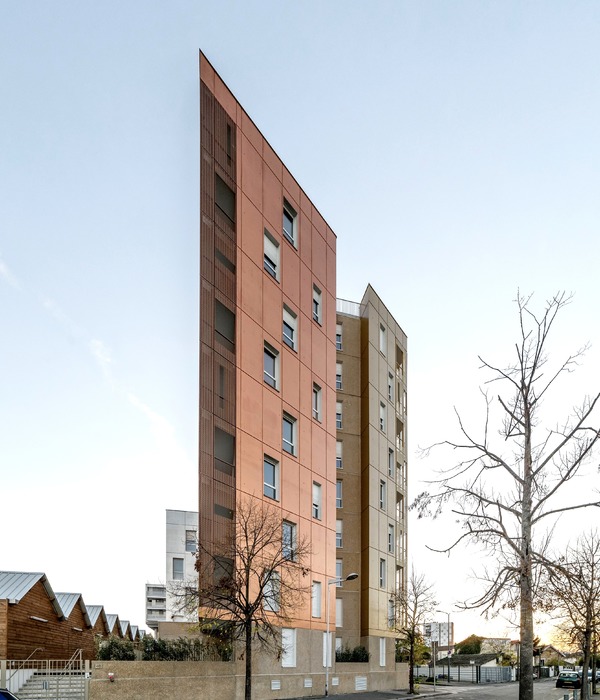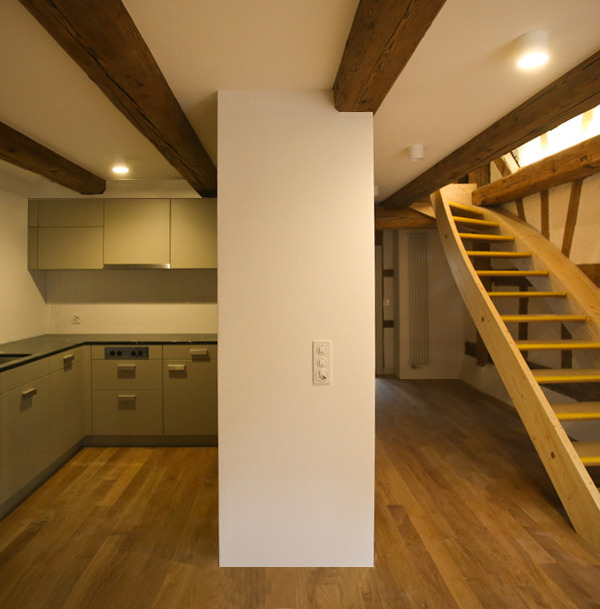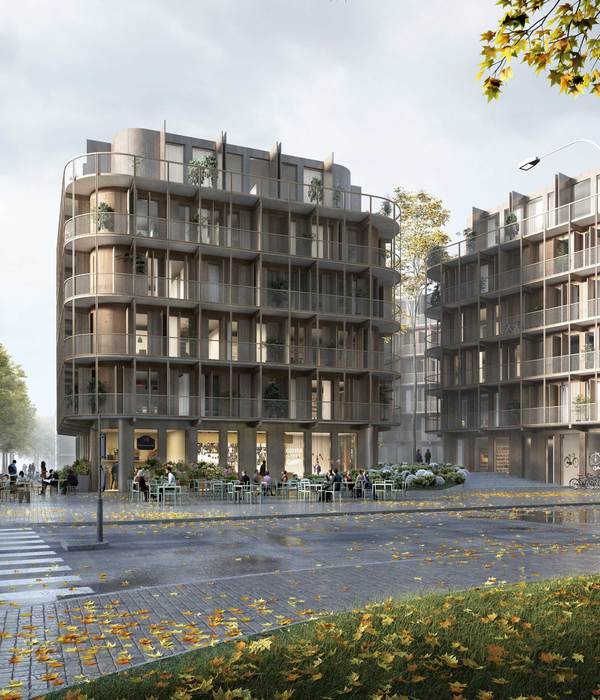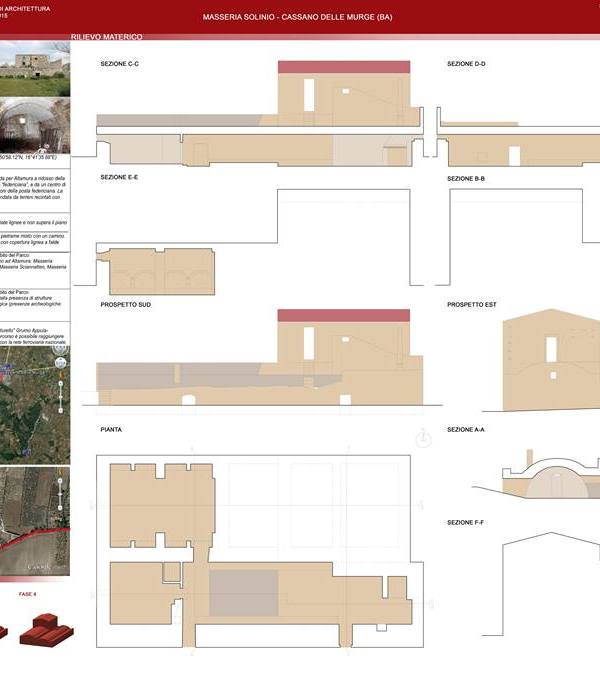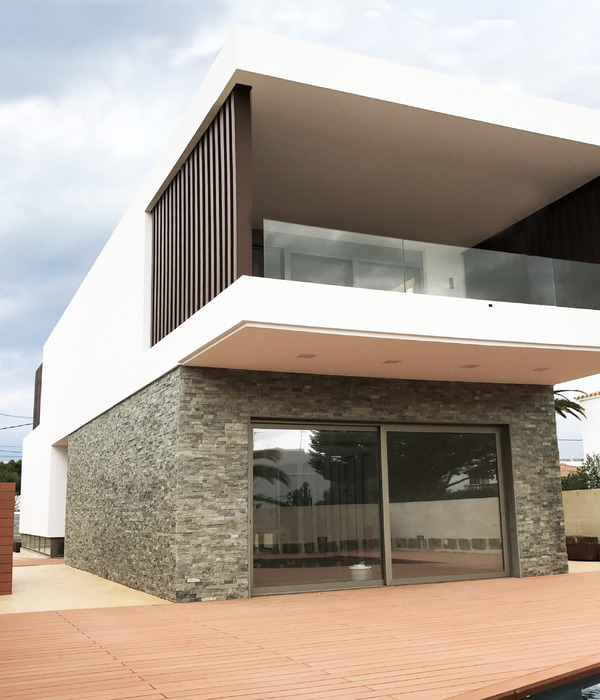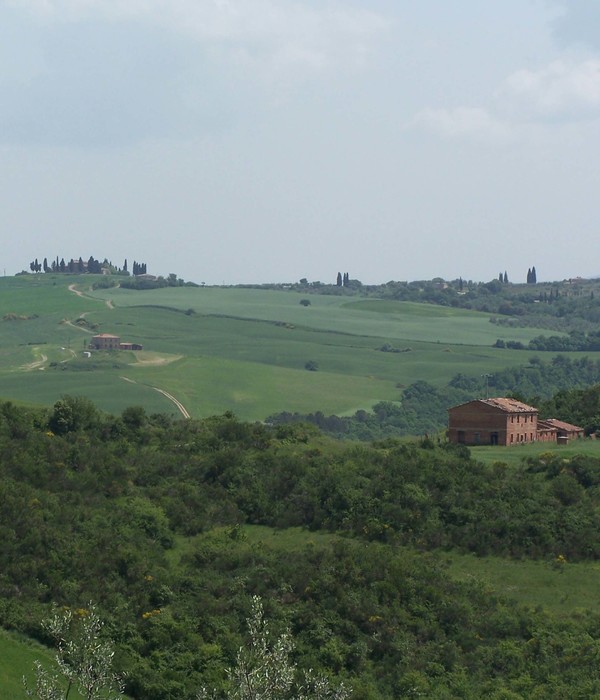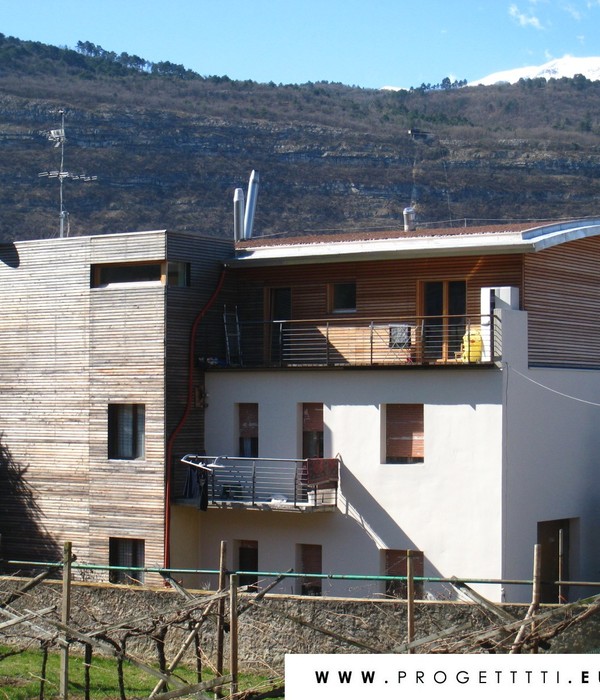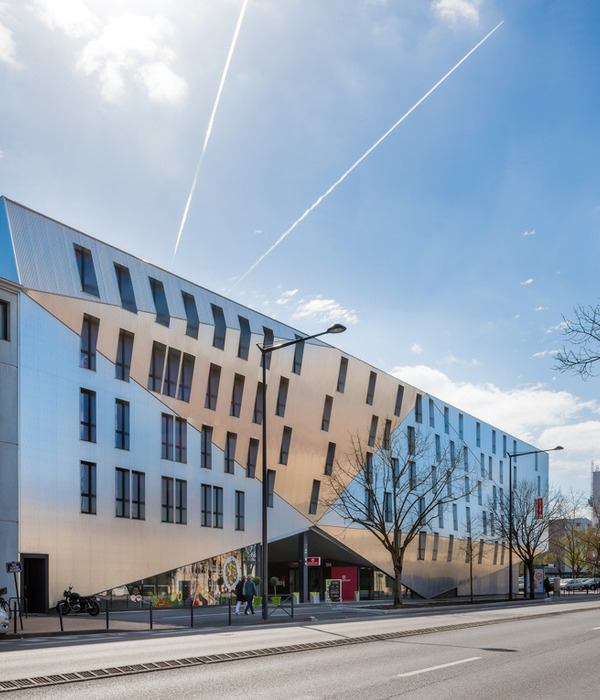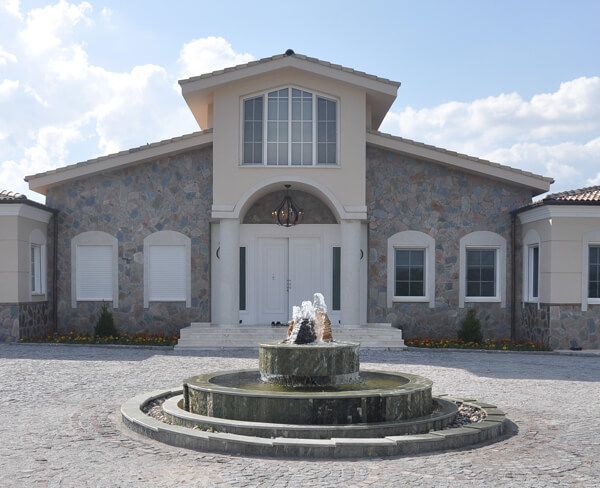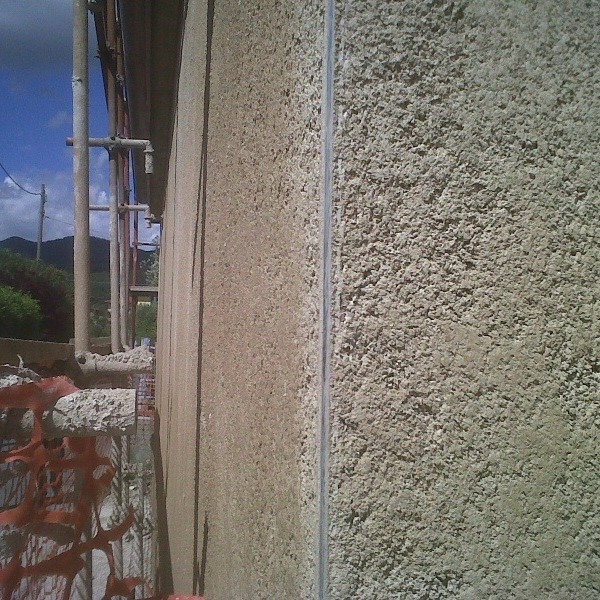可视与不可视
Visible or not visible
本项目是为一对夫妇和他们的孩子打造的住宅,位于三好市爱知县住宅区的一角。房子前面的道路为社区居民日常交流和儿童们玩耍提供了空间。旁边的地块是附近公寓楼的停车位。考虑到房屋的周围环境,不断的有路人出现在周围导致业主会有被监视的感觉,所以此前他们总是将自己封闭在房子中。为了解决这个问题,设计者试图将房子打造成一个钩状的开敞空间,使横向空间与纵向空间相互交错,形成可视与不可视的层面,这样一来,业主便可与周围环境保持足够的距离并且不影响与四周的联系。
This is a house for a couple and their children on a corner of a residential zone in Miyoshi City, Aichi. The front road of the house is used by the people of the community as a space where neighbors enjoy their daily chat and children’s playground. The adjacent plot is a parking space for the neighboring apartment building. Considering the environment surrounding the house where one could constantly feel the presence of someone or being watched, we usually close ourselves inside of the house. Instead, we tried to create a house with a hook-shaped open space that crosses laterally and vertically to form visible and invisible surfaces, where we could keep an adequate distance and connection with the surroundings.
▼项目概览,Overall view
▼周边街道,Surrounding context
阶梯通道与横跨桥梁
Stepped alley and Crossing Bridge
与周围的房屋相比,本案位于住宅区的一角,其面积大约是周围房屋的两倍,设计者为避免给邻居造成视觉上的压迫感和过多的目光接触,他们将房屋的首层一半设置在地下,并设计了高度约为1.5层的两个体量与一个开放空间。
The corner site is around twice the size of that compared to the surrounding houses, and we de-cided to avoid giving an oppressive feel and meeting of the eye to our neighbors. Consequently, we embedded half-story of the 1st floor underground, arranging two building masses and an open space under a single roof, which the height is 1.5 stories above ground.
▼房屋立面设计,Facade design
▼入口处,Entrance
对开放空间的设计,设计者将餐厅厨房设置在与室外道路同一高度处,主楼梯下方的中庭处是双层层高的的起居室,两个屋顶露台位于就餐空间的北侧、起居空间的南侧,以上空间共同构成一个钩状(Z字形)的通道,其中一半为室内空间,另一半则位于室外。设计者在空间中的对角处布置了两个体量,分别是首层西南侧的卫生间和东北侧的主卧室以及二层的游戏室(在未来将作为儿童房),并在这两个体量之间搭建了一座桥梁,横跨钩状的通道。
The open spaces: dining kitchen space on the same level as the front road, a two-story atrium living space below the grand stairs, roofed terrace spaces on the north side of the dining space and on the south side of the living space, become a hook-shaped (Z-shaped) alley space which half of the alley is interior while the other half is outside space. We arranged two building masses diagonally, a southwestern block of sanitary spaces on the 1st floor and a northeastern block of master bedroom and 2nd floor playroom (future children’s room) and built a bridge between the two masses that accesses the playroom. At the same time, the bridge crosses over the open alley.
▼从室内看向入口处,Looking outside from the entrance
▼入口处的阶梯通道,Stepped alley at the entrance
▼阶梯通道上方的桥梁,The bridge above the alley
▼交错的空间,The crossing space
设计者们将厨房与起居空间之间设计为最佳舒适距离,业主穿过桥梁,能够在主楼梯上享受到来自两个露台的自然光线和通风,这两个露台是有房屋横向与纵向的分层以及钩状的空间交叉所形成的,这种循环交错的形状将开放的空间从两个体量之外的灰色地带转变为活跃的“阶梯通道”空间。
We came to think that the comfortable distance between the kitchen and living spaces, passings on the bridge, relaxing on the grand stairs and natural light and wind coming from the two terrac-es created by the lateral and vertical layering and crossings of the hook-shaped circulation can change the open space to an active “stepped alley” from what used to be just a leftover space between the two masses.
▼厨房餐厅处,Kitchen and dining area
▼其他室内空间,Other interior space
▼室外花园,Garden
▼入口处绿植细节,Details of the plant at the entrance
位于房屋中央的“阶梯通道”形成的这种模糊的可见性,因其所处的深度,好像是城市中隐蔽的“后街”一样,但同时它又作为了房屋中两个建筑体量之间的“主要街道”。设计者们认为这样的设计能够为不同角度的观察者提供不同的视角。
The central “stepped alley” that acquired a vague visibility and connection to its depth became an invisible “back street” from the city, while becoming a “main street” between the two building masses inside the house. We expected that it would become an intermediate area that shows a bilateral character according to one’s standing point.
▼夜览,Night view
▼平面图,plan
Project name: House with Hooked Multi-Level Crossing
Architecture Firm:IHARA Masaki + IHARA Kayo / ihrmk
Website:https://ihrmk.co.jp
Completion Year:2019
Gross Built Area: 104.25m2(Gross Floor Area: 124.91m2)
Project location: Miyoshi, Aichi, Japan
Media Provider
Photo credits:TAKAHASHI Nao
Additional credits
Lead Architects: IHARA Masaki + IHARA Kayo
Engineering: KOMATSU Hirotoshi (structural engineer)
{{item.text_origin}}

